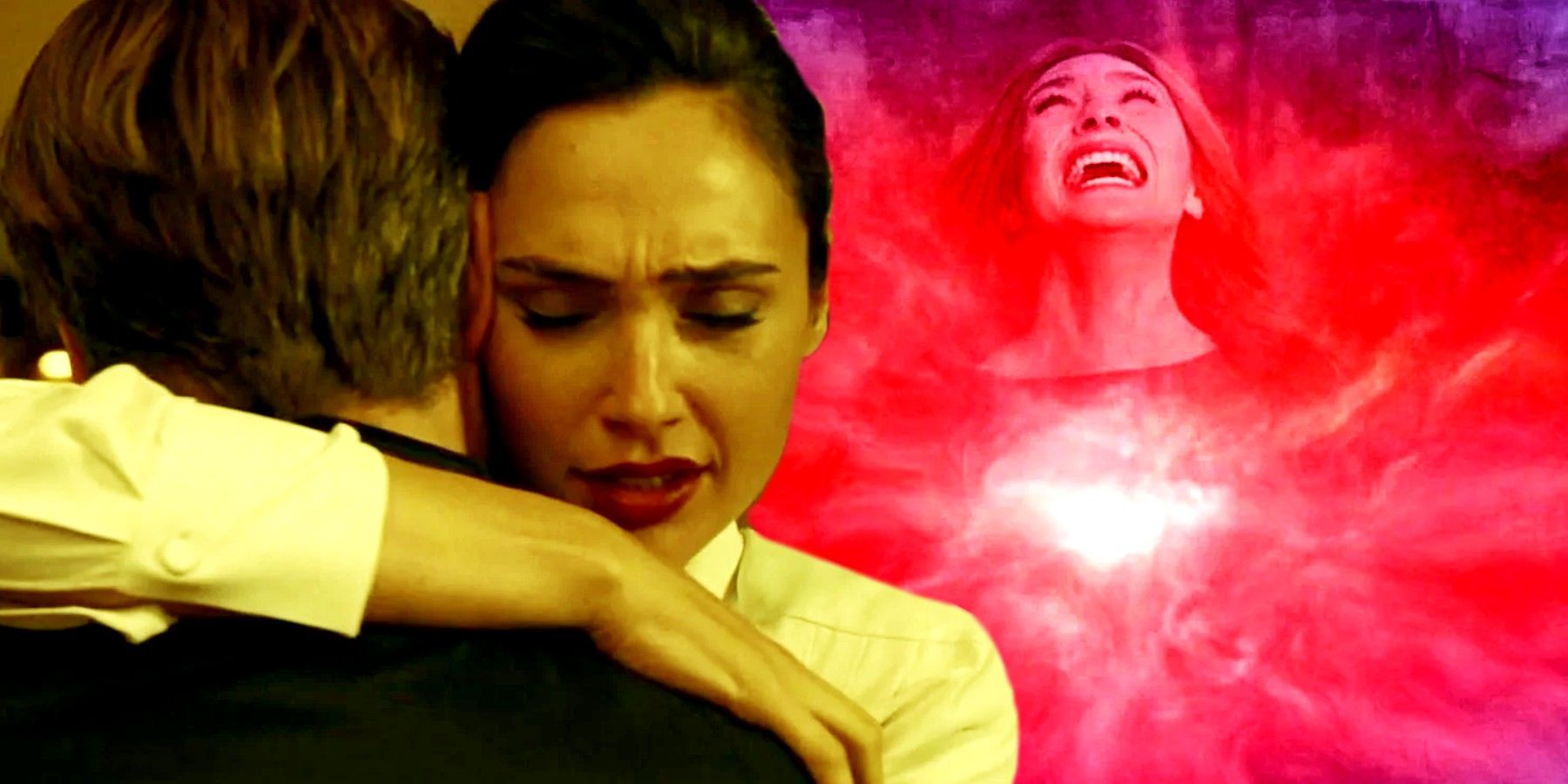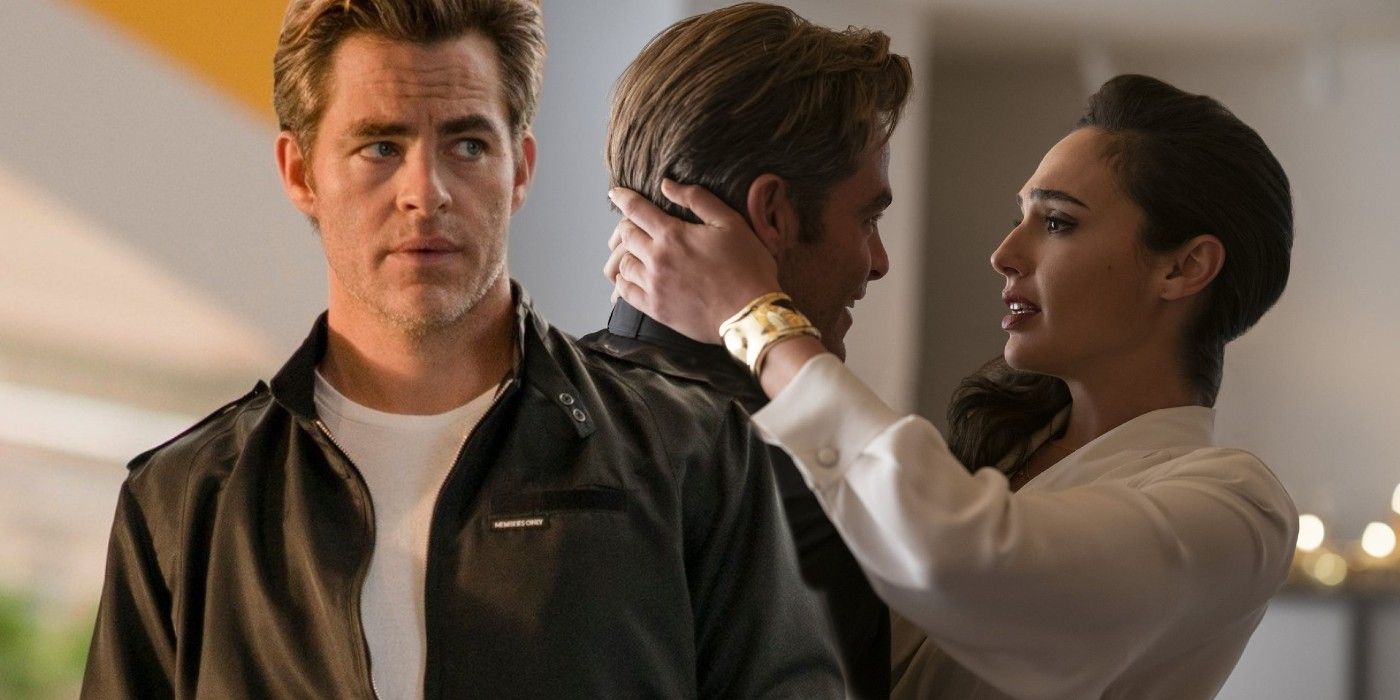
While both WandaVision and Wonder Woman 1984 feature super-powered heroines dealing with grief, the former handles it far better. In fact, in retrospect, Wonder Woman 1984 was a perfect opportunity to tell a similar story to WandaVision with both following heroes in the immediate aftermath of the deaths of their romantic partners and the loss of a key part of their lives.
Taking place almost seven decades after the original Wonder Woman, the sequel sees Gal Gadot's Amazonian hero dealing with the loss of Steve Trevor after his sacrifice himself in the first movie. It shows an introverted and lonely Diana who doesn’t seem to have moved on. Her dearest wish, which she makes while holding the Dreamstone, a powerful relic that grants wishes, is to get Steve back. Meanwhile, Wandavision shows Wanda processing her grief for her beloved Vision after his death at the end of Avengers: Infinity War. While it was set up that she stole Vision's body from S.W.O.R.D., episode 8 sets the record straight; Wanda did show up at S.W.O.R.D. to request Vision’s body to be able to bury it, but after seeing it dismantled and realizing he is really gone, she leaves.
The Marvel show has a very straightforward approach to grief; one theory even suggests that Wandavision explores the five stages of grief throughout its episodes. Wanda’s feelings are laid bare in episode 8 in particular when she witnesses Vision’s lifeless body, and visits the plot of land in Westview he bought for them to grow old on. On the other hand, Diana Prince’s feelings are not as deeply explored in Wonder Woman 1984; she is shown to not have any friends or other meaningful social connections, living a lonely life, and her personal life choices, like her career as an anthropologist, are never particularly explored. Even 70 years after Steve Trevor’s death, she is still clinging to his memory, but there isn't quite the established logic of why. In short, Wonder Woman 1984 missed a great opportunity to explore the depths of its main character's grief, just as Wandavision does.

The DCEU has often been deemed to be too dark a universe, and the Wonder Woman franchise obviously sought to break that trend. The eighties setting allows for a fun and vibrant aesthetic, but director Patty Jenkins could’ve married its light-heartedness with a deeper exploration of Diana’s feelings to add greater character depth. Wonder Woman 1984 includes some very problematic plot holes with Steve Trevor’s magical return and instead glosses over Diana’s battle with grief. Wandavision offers something in stark contrast, where the intensity of Wanda’s feelings is faced head on, while still offering some wonderful comedic moments.
Wanda’s grief for Vision is not diminished by the light-hearted comedy that stems from its sitcom format, as well as the unintended consequences of the Hex spell. Rather, it benefits from it. The show seeks to help Wanda process her feelings through the portrait of life as a mixture of good and bad moments. The message is that when going through grieving a loved one, there will be moments of laughter and silliness amongst the sadness and anger, which helps the MCU show feel like it understands grief in a way the franchise never has. Wandavision’s comedy gives humanity and hope to Wanda’s character because it is balanced with pain, as opposed to the approach Wonder Woman 1984 takes. Steve Trevor’s return gives the movie a weaker Diana; her optimistic, wide-eyed hope for humanity which was the essence of the character is lost in her longing for Steve. Hopefully, Wonder Woman 3 offers greater insight into Diana Prince’s character, and gives her the opportunity to move on.
from ScreenRant - Feed https://ift.tt/2MKxRQ1

0 Comments